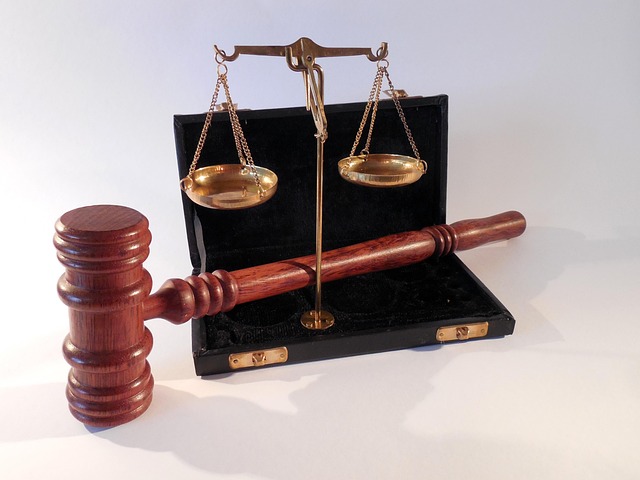Business partnership disputes can be resolved amicably by negotiating, reviewing agreements, and identifying dispute areas. While litigation provides clear outcomes, it's costly and time-consuming. Mediation, facilitated by a neutral third-party, offers a constructive path to dissolution, preserving relationships. After a resolution, businesses should implement stronger controls and governance to prevent future conflicts. The post-litigation phase is crucial for recovery and learning, including formal partnership dissolution and settlement agreements.
“In the intricate world of business partnerships, disputes can arise, testing the strength of even the most robust alliances. This article navigates the landscape of litigation types, offering insights into common partnership disputes and the strategies to resolve them. From understanding the root causes to choosing between amicable resolution and legal action, we explore effective steps to dissolve a business partnership amicably.
Additionally, we delve into the mediation process, the intricacies of legal proceedings, and post-litigation strategies for rebuilding and learning from these experiences.”
- Understanding Business Partnership Disputes: Common Issues Arising
- Amicable Resolution vs. Legal Action: When to Choose Each Path
- The Process of Mediating Partnership Disagreements
- Legal Proceedings: Types of Court Cases and Their Outcomes
- Post-Litigation: Rebuilding and Learning from the Experience
Understanding Business Partnership Disputes: Common Issues Arising

Business partnership disputes can arise from a variety of common issues, including disagreements over strategic direction, financial management, and operational decisions. When partners have differing visions or one partner feels their contributions are not adequately recognized, it’s crucial to understand the steps for an amicable dissolution. Initiating peaceful negotiations is often the first step, where open communication and mediation can help resolve conflicts without legal intervention. This process involves assessing the partnership agreement, identifying areas of dispute, and exploring mutually beneficial solutions.
The goal is to find a resolution that meets the needs of all involved parties while minimizing disruption to ongoing business operations across the country. Engaging in mediation or seeking professional advice can facilitate these discussions. For clients facing such challenges, having an attorney who understands all stages of the investigative and enforcement process can be invaluable. By following these steps, business partners have a chance to resolve conflicts amicably, preserving relationships and focusing on the future of their ventures.
Amicable Resolution vs. Legal Action: When to Choose Each Path

When facing a dispute with a business partner, deciding between an amicable resolution and legal action is crucial. While litigation offers definitive outcomes, it can also be costly and time-consuming. Amicable resolution, on the other hand, allows parties to negotiate a mutually beneficial agreement outside of court, preserving relationships and potentially saving significant legal fees.
Choosing the right path depends on various factors. For less complex issues, such as misunderstandings or disagreements over steps to dissolve a business partnership amically, direct communication and negotiation may be sufficient. However, for more serious disputes involving contractual breaches, fraud, or potential general criminal defense concerns, engaging legal counsel is advisable. The respective business’s specific circumstances, the severity of the dispute, and the likelihood of reaching an agreement without formal proceedings all play a role in determining the most effective course of action during all stages of the investigative and enforcement process.
The Process of Mediating Partnership Disagreements

When partnerships reach a point of irreconciliable differences, mediation offers a path to dissolution while preserving relationships. The process typically involves several key steps: first, both parties agree to mediate and appoint a neutral third-party mediator who will facilitate discussions. This mediator helps identify core issues, encourages open communication, and explores mutually acceptable solutions.
The mediator guides the partners through a structured approach that can include brainstorming sessions, identifying interests rather than positions, and generating creative options for resolving disputes. Unlike litigation, mediation fosters collaboration rather than confrontation, allowing both sides to maintain control over the outcome. Once an agreement is reached, it’s documented legally, ensuring a clear and amicable steps to dissolve a business partnership. This approach benefits not just the general criminal defense attorneys involved, but also philanthropic and political communities that rely on robust partnerships for their work.
Legal Proceedings: Types of Court Cases and Their Outcomes

Legal Proceedings encompass a wide range of court cases, each with distinct outcomes tailored to the unique circumstances presented. From straightforward steps to dissolve a business partnership amicably to complex high-stakes cases, the judicial system navigates diverse legal scenarios. These cases often pit corporate and individual clients against one another, or sometimes even within their own ranks, highlighting the intricate interplay of business, finance, and personal interests.
The outcomes of these proceedings can range from settlement agreements that foster reconciliation between parties to decisive judgments that sever professional or financial ties. In many instances, a successful resolution involves a combination of legal acumen, mediation, and a deep understanding of both the letter and spirit of the law. This is particularly true in cases affecting philanthropic and political communities, where the stakes are high, and the consequences can reverberate far beyond the immediate parties involved.
Post-Litigation: Rebuilding and Learning from the Experience

After a litigation process comes the post-litigation phase, which is crucial for rebuilding and learning from the experience. The first steps in this phase often involve the formal dissolution of any business partnerships that were at the heart of the dispute. This process should be handled amicably to avoid future conflicts and maintain professional relationships. A settlement agreement is a common way to achieve this, outlining the terms of the partnership’s end and ensuring both parties are protected legally.
The resolution can offer valuable insights for both corporate and individual clients looking to prevent similar issues in the future. By reviewing the circumstances that led to litigation—be it white-collar or economic crimes—and understanding the mistakes made, businesses can implement strategies to strengthen their internal controls and governance. This proactive approach not only helps in avoiding indictment but also fosters a culture of compliance and integrity within the organization.
When faced with a business partnership dispute, understanding the various litigation types and their outcomes is crucial. While legal action may seem like the go-to solution, exploring amicable resolution through mediation or alternative dispute resolution (ADR) can often lead to more favorable outcomes and preserve professional relationships. For those considering the steps to dissolve a business partnership amically, navigating these processes can facilitate a smoother transition and foster learning from the experience. By weighing the pros and cons of each path, entrepreneurs can make informed decisions that best suit their long-term goals and minimize potential setbacks.






